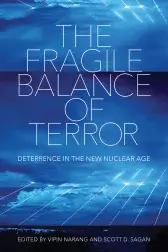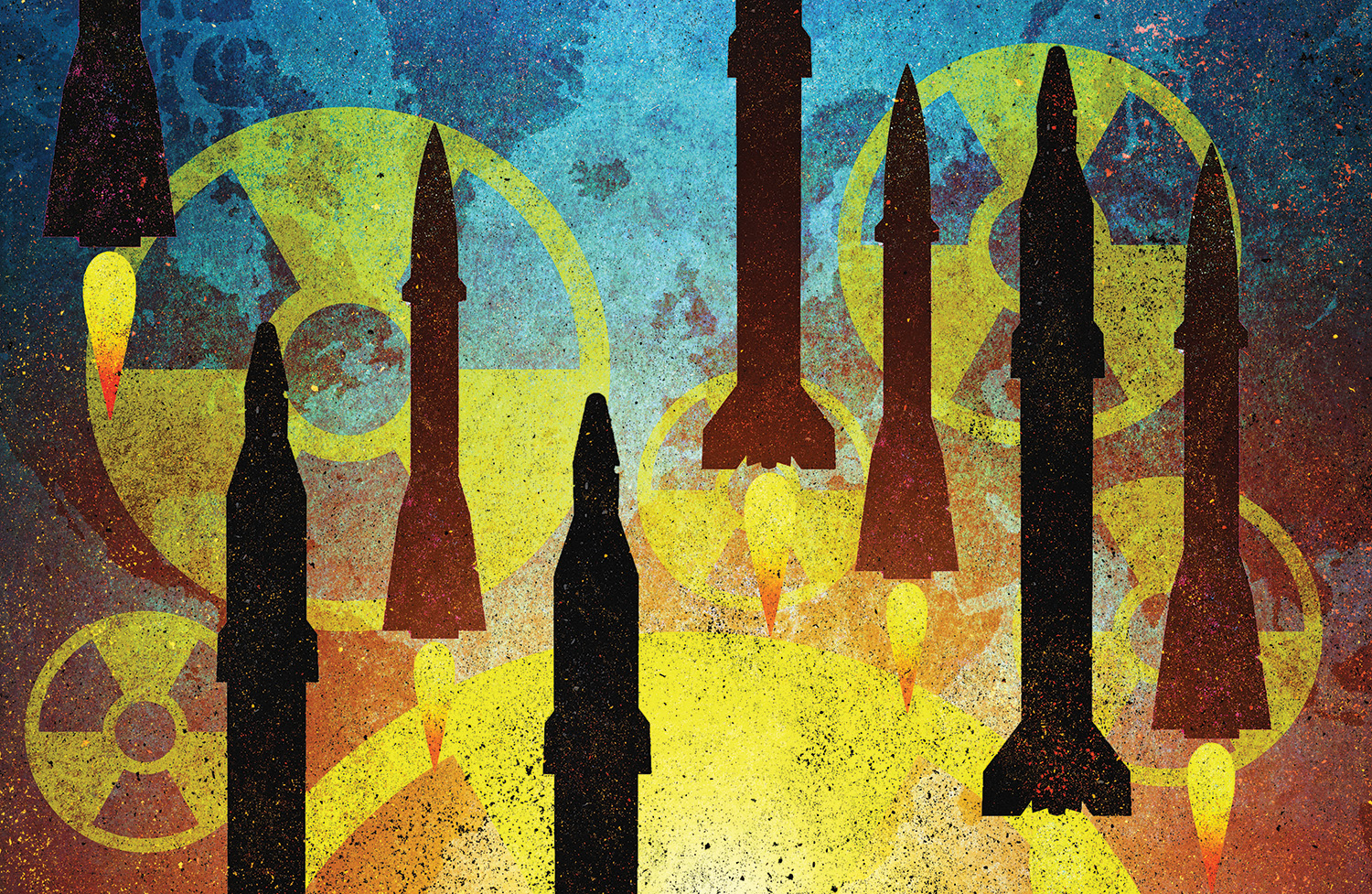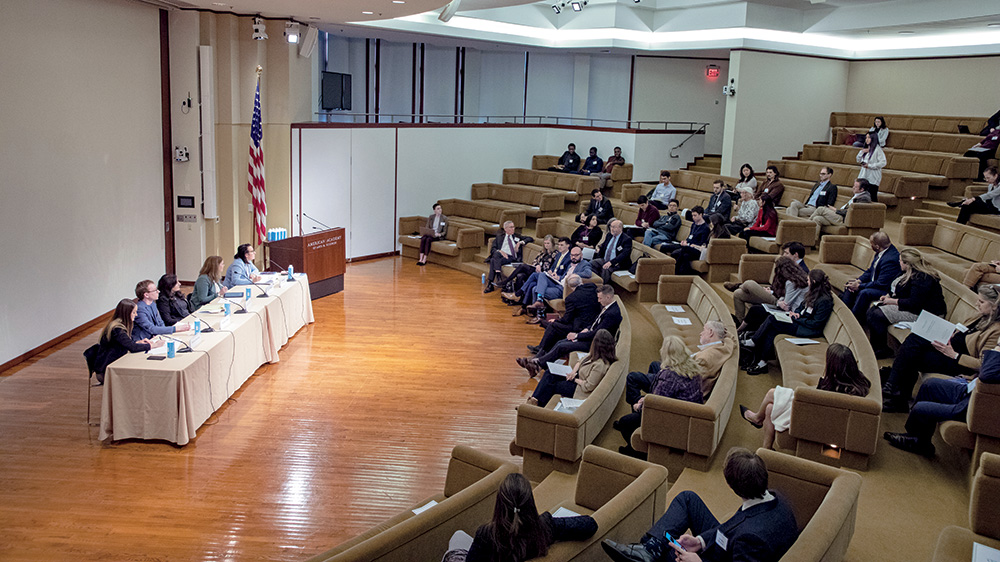By Doreen Horschig, former Raymond Frankel Nuclear Security Policy Fellow at the Academy
The world is witnessing the emergence of new nuclear states that have acquired or are pursuing nuclear capabilities. These new nuclear actors pose significant threats to global security as they challenge the existing nuclear order and nonproliferation regime. Because of North Korea’s provocative behavior and aggressive rhetoric, its nuclear program has been a cause for concern for the international community. Pakistan’s and India’s nuclear weapons are a source of instability in South Asia, where tensions between the countries remain high. Iran’s nuclear program, which Iran insists is entirely for peaceful purposes, is a major concern for other states in the Middle East and presents the risk of a regional arms race.

In January 2023, the Academy’s project on Meeting the Challenges of the New Nuclear Age: Deterrence and New Nuclear States published The Fragile Balance of Terror: Deterrence in the New Nuclear Age, an edited volume of essays that discusses this new nuclear era and its emerging challenges.1 Coeditors Vipin Narang (Massachusetts Institute of Technology) and Scott D. Sagan (Stanford University) along with several security experts examine how this era opens paths for nuclear instabilities that were not present during the Cold War. This new nuclear age is characterized not simply by a larger number of nuclear actors but also by important changes in the relationships between them.
The authors in the volume highlight the concerns that arise from the increasing number of nuclear weapons states in the twenty-first century. Characterized by domestic unrest, unpredictable leadership, and volatile locations, the modern deterrence system has become increasingly fragile. Technological advancements have amplified arsenal vulnerability and misinformation, heightened multinational nuclear rivalries, and increased the speed at which autocrats can make arbitrary and potentially life-threatening decisions.
The Fragile Balance of Terror was written before the Russian invasion of Ukraine began. Because of the ongoing war, the volume’s lessons about risks and dangers of new nuclear crises are relevant to the challenges we face today. The collection reminds us of the increasing dangers on the Korean Peninsula, in South Asia, and potentially in the Middle East if Iran is not brought back into negotiations. The authors identify, characterize, and analyze the unique challenges the United States and other states face in this new nuclear age.
In her essay, Caitlin Talmadge (Georgetown University) explains that the current nuclear age provides more opportunities to stumble into a nuclear war. The presence of multiple nuclear competitors – arrayed in a great-power triangle or in several regional dyads or triangles, and the interactions between them – raises greater risks of miscalculation about what other states see as their core interests and what constitutes a challenge to the status quo. Rose McDermott (Brown University) points out that personalist leaders who control nuclear weapons are another risk in this new era because they are easier to antagonize, are more prone to conflict, and are less willing to hear counterarguments.
There are also new tools that change the dynamics of how leaders and governments of nuclear states interact. Heather Williams (Center for Strategic and International Studies) and Vipin Narang analyze how social media platforms affect international politics, particularly crises involving one or more nuclear powers. Twitter, Facebook, and WhatsApp – and their local variants – amplify nationalism and disinformation, thereby either accelerating or decelerating nuclear crises in novel ways. Amy Zegart (Stanford University) describes how open-source intelligence (OSINT) can inject and amplify errors that are created intentionally by adversaries and unintentionally by inexperienced amateurs. However, OSINT can also bring distinct advantages, such as greater accessibility to observe global developments, more sharing of unclassified information, and more diversity in analytical perspectives.
The second part of The Fragile Balance of Terror focuses on the enduring challenges that have confronted nuclear states: that is, achieving reliability, survivability, and command and control over their nuclear forces. In contrast to the “old” nuclear states, the new ones tend to value political gains and displays of force – like nuclear explosions, missile flight tests, and other military exercises – over the increased reliability of their programs, which relegate technical considerations to the periphery, as Jeffrey Lewis (Middlebury Institute of International Studies at Monterey) and Ankit Panda (Carnegie Endowment for International Peace) explain. The balance of terror may be deliberated in the political calculations of leaders rather than in the calculations made by analysts surrounding these issues.
Christopher Clary (University at Albany, State University of New York) explores techniques historically used by nuclear weapons states to ensure a survivable second-strike in the event of a widespread adversarial counterforce attack. He finds that nuclear forces among new nuclear powers are likely to survive a nuclear first-strike and that future strains will not be worse than those faced during past nuclear eras. However, he notes that concerns about survivability will likely intensify. Giles David Arceneaux (University of Colorado) and Peter Feaver (Duke University) urge policy-makers to consider how command and control systems interact with those of their adversaries to resolve crises successfully. This has become even more important because new nuclear states are unlikely to have static command and control arrangements, which raises nuclear risks that scholars and analysts have previously overlooked.
Mark Bell (University of Minnesota) and Nicholas Miller (Dartmouth College) explore the lessons new nuclear states have learned from the actions of established nuclear powers, and they conclude that nuclear states rarely learn the right lessons. In the post-conflict period or after crisis de-escalation, nuclear states tend to believe that they escaped significant escalation because of their own skill, rather than luck, which reinforces their belief and support for nuclear use in future crises. The theory of nuclear learning does not offer a reliable path to stable relations among nuclear-armed states in the new nuclear era, and this has implications for policy-makers not to rely on new nuclear states adopting a restrained nuclear posture.
Overall, the volume suggests that U.S. analysts cannot use Cold War–era theories, metrics, and policies to understand today’s nuclear dangers and emerging risks. To mitigate the danger of deliberate or inadvertent nuclear use, attention must be focused on aspiring nuclear states beyond the United States, Russia, and China. U.S. policy-makers have struggled to respond effectively to the risks posed by new nuclear states. Countries with aggressive nuclear postures could ultimately alter regional balances of power and significantly constrain and undermine the U.S. ability to operate in strategic theaters such as the Middle East, the Gulf Region, and East Asia.
Two events celebrated the publication of The Fragile Balance of Terror: a panel discussion on January 26, 2023, at the Center for Strategic and International Studies in Washington D.C.,2 and a seminar on February 2, 2023, at the Center for International Security and Cooperation at Stanford University.3 Online and in-person participants included members of the diplomatic community as well as researchers and practitioners.
The Academy is also sharing the volume’s findings with policy-makers and congressional audiences. In October 2022 and January 2023, several authors visited the offices of Senators Edward Markey, Jeff Merkley, and Jon Ossoff and Representatives Chuck Fleischmann, Ted Lieu, and Michael McCaul to brief the members of Congress and their staff on nuclear security issues. On January 25, 2023, the Academy, in partnership with The Bulletin of Atomic Scientists and the Council for a Livable World, organized a briefing on “The Doomsday Clock and Today’s Nuclear Landscape” to inform congressional staff about the aspects of today’s nuclear landscape that inspired The Bulletin to set its nuclear Doomsday Clock at 90 seconds to midnight.4 Over fifty staffers attended the briefing, which featured Scott Sagan (Stanford University), Siegfried Hecker (Stanford University), and Sharon Squassoni (George Washington University).
Other outreach activities included in-person events at the Harvard Kennedy School’s Belfer Center for Science and International Affairs on March 27, 2023, and at the Academy on March 28, 2023. The latter event featured Heather Williams, Christopher Clary, Matthew Bunn, and other experts who discussed the book’s implications on deterrence amid the war in Ukraine and other global tensions.
In addition, author Rose McDermott discussed her chapter on the podcast Horns of a Dilemma, produced by War on the Rocks and the Texas National Security Review. She explains how the leadership of Ukrainian President Vlodymyr Zelensky and Russian President Vladimir Putin shaped the onset and current progress of the Russian invasion of Ukraine.5 In addition, David Arceneaux wrote on the risks of new nuclear states’ command and control systems for the Bulletin of Atomic Scientists.6 There is also a forthcoming appearance of Jeffrey Lewis and Ankit Panda on the Arms Control Wonk podcast7 and a policy brief by Rose McDermott in Lawfare.
As we learn from The Fragile Balance of Terror, we need new thinking about new nuclear states, especially new players such as personalist regimes, revisionist regional powers, and asymmetric global powers. The volume poses several questions for the future of the global order:
- What knowledge and experiences are transferable from the Cold War?
- Which concepts guiding arms control will remain relevant in a new nuclear age?
- Can nuclear deterrence hold for the next decade?
The Russian war in Ukraine and other veiled nuclear threats have thrust the dangers posed by nuclear weapons back into public consciousness. The simmering tensions on the Korean Peninsula and between India and Pakistan, the failure to curb the Iranian nuclear program, and the specter of Chinese military action over Taiwan only add to the fragility of the current global nuclear order. Whether nuclear deterrence will remain robust in an era rife with new risks is not yet certain.
For more information about the Academy’s work in nuclear weapons and arms control, visit the Academy’s website.

